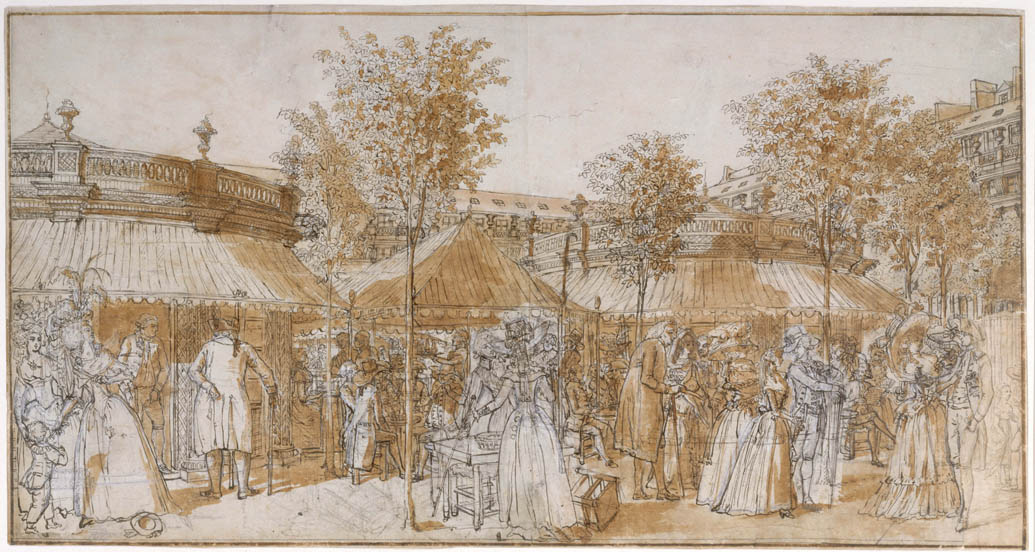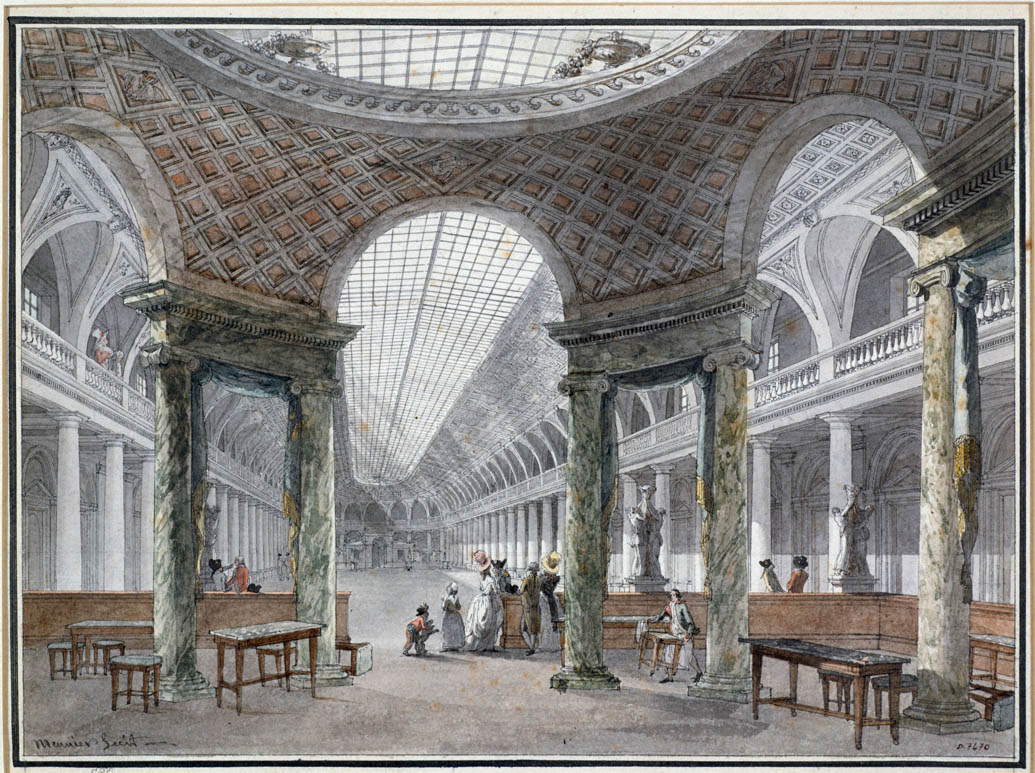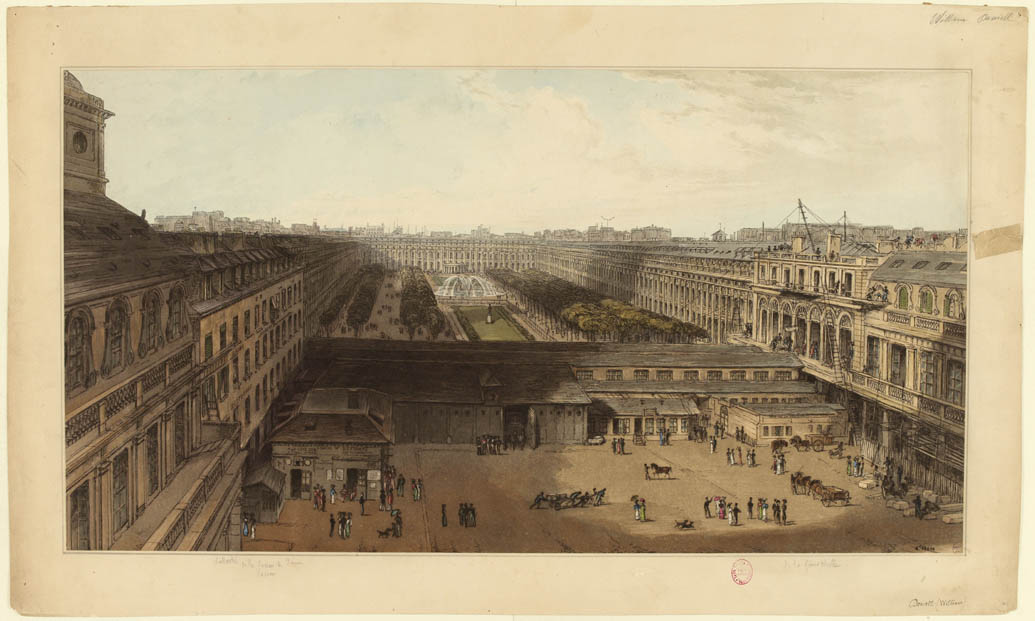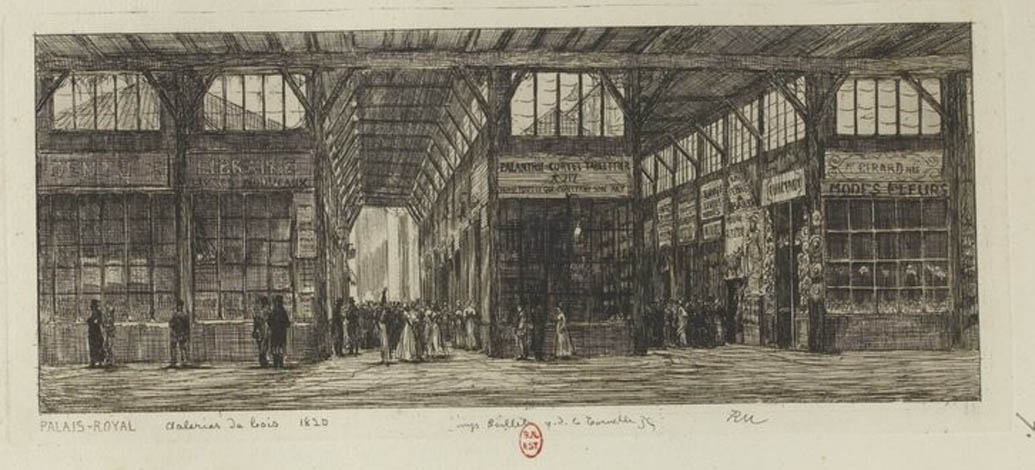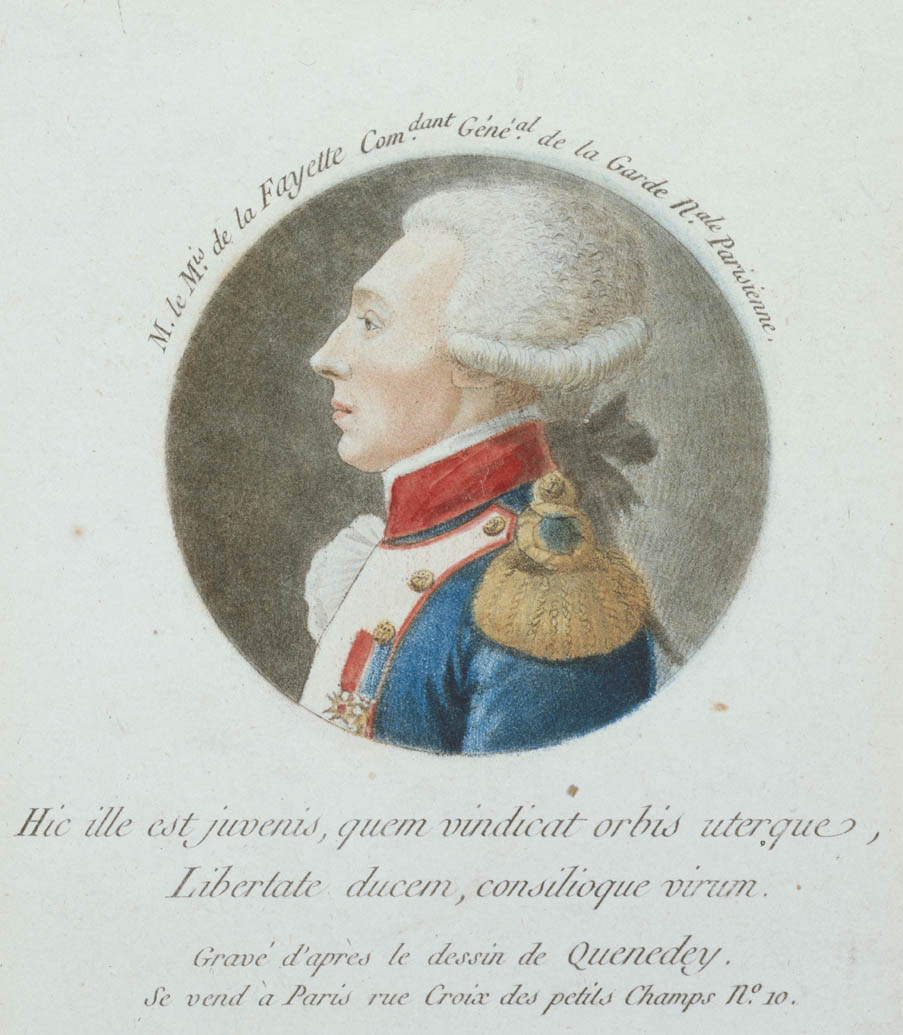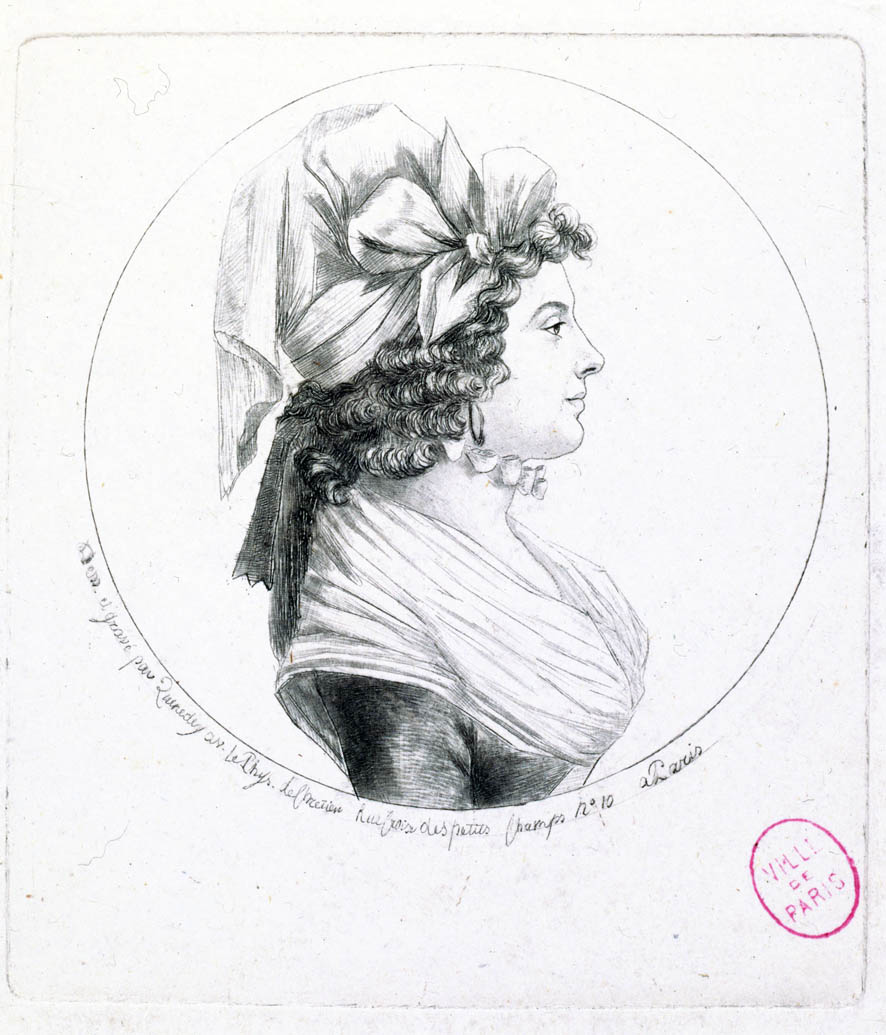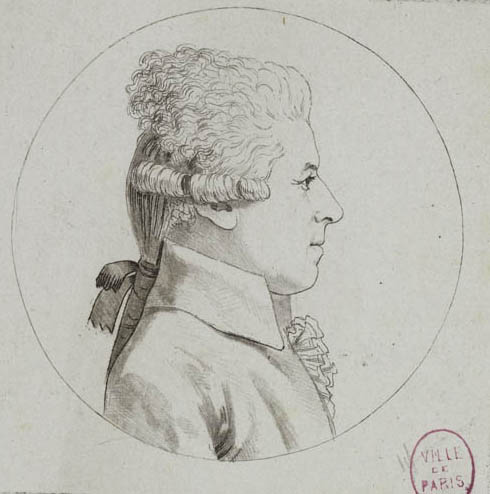The Palais Royal, the Nerve Center of the Revolution
Today, businesses in the Palais-Royal are concentrated in stores obediently lined up under its arcades. However, before 1789, the Duke of Orléans had turned the Palais-Royal into a sort of open-air mall in Paris. Business was bustling day and night. This freedom was not necessarily revolutionary, but the revolutionaries took advantage of this freedom to gather together, shielded away from the watchful eyes of the police. Consequently, radical patriots and orators took refuge here and this is where the Parisian insurrection of July 12, 1789 first started.
Location
ItineraryGalerie du Jardin (Palais Royal)
Suggestion
The Palais-Royal and its neighborhood
“Everyone to Curtius’s Store!” The Demonstration of July 12, 1789
To find out more…
The Palais-Royal arena
Who said that the Revolution killed business? In 1789, an arena built two years earlier stood in the location of the current central fountain. 112-meters long, 32-meters wide, it was partially built underground so as not to disturb the view of the galleries. Crowned with a large glass ceiling, it hosted horse races and performances, as well as 40 underground boutiques, which never emptied! Destroyed by a fire in 1798, it did not survive the Revolution.
Wooden galleries: the origin of Paris’s covered passages
During the Revolution, the Palais-Royal was the place to be, kind of like the mall at Les Halles today. At that time, the courtyard of the Palais-Royal (where Buren’s columns are currently located) was separated from the gardens by a long covered wooden gallery, built just before the Revolution. It was not especially luxurious: it resembled a large covered market with more than 2,000 square meters dedicated to businesses.
A scandalous place
It has been forgotten, but during the Revolution, the Palais-Royal was also one of the epicenters of the Paris sex market. It was possible to go and see pornographic performances here or pay for sexual relations. At number 164, Dame Joly ran a brothel well known by Parisians. In the Penal Code of 1791, this business was not considered a crime. However, if prostitution was decriminalized, the Palais-Royal “ladies of the night” were monitored and often arrested. They greatly threatened the good family values of the “honest men” whom the Republic wanted to promote after 1795.
Fashionable pocket portraits
In 1790, Edme Quenedey’s studio was never empty. In only a few minutes, he could make the most lifelike portraits that existed on the market, for a price that was accessible for all wallets. The profile was made with a machine: the physiognotrace, known for tracing someone’s physiognomy as accurately as possible. His success was enormous: several thousand clients had their portrait made, including Parisians, people from the colonies, other departments in France or even abroad, like the future President of the United States Thomas Jefferson. The first politicians quickly understood the importance of being recognized: Bailly, Paris’s first mayor, as well as La Fayette, Commander of the National Guard, in addition to many others, passed out these small paper portraits, which gave them a friendly and modest image.


